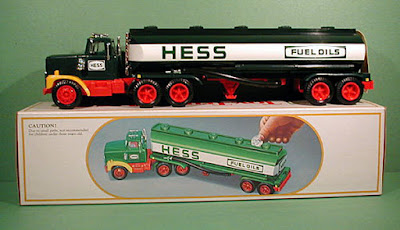 |
| Two Boys and a Bird |
QUESTION: I love to browse online antique auctions. Recently I came across an incredibly detailed figurine, the description said it was made by Hutschenreuther. I collect porcelain figurines but have never heard of this manufacturer. Can you tell me more about this company?
ANSWER: Although the Hutschenreuther name has been around for over 150 years, it’s’ less well known than say Meissen. Movement, grace and lifelike detail are what make these porcelain figurines unique.
Carl Magnus Hutschenreuther’s father owned a porcelain painting studio, and his mother's family owned a porcelain factory, both located in Wallenorf, Germany. By the time he was 18 years old in 1812, Hutschenreuther was already dealing in porcelain he had decorated.
 During a business trip to Hohenberg in northeastern Bavaria, Hutschenreuther discovered a clay that was excellent for making porcelain. He became so inspired that he decided to return to Hohenberg and apply for permission to build a porcelain factory.
During a business trip to Hohenberg in northeastern Bavaria, Hutschenreuther discovered a clay that was excellent for making porcelain. He became so inspired that he decided to return to Hohenberg and apply for permission to build a porcelain factory.
But Hutschenreuther encountered nothing but red tape. The local government turned him down in 1816 because of the protests of neighboring hammer mills fearing an expected wood shortage. The following year he tried again to get permission to build a kiln, and the ministry turned his request down with no explanation. Finally, after nearly six years of constant efforts and continuous protests from neighboring communities, Hutschenreuther, the town council granted a license to build a porcelain factory in Hohenberg in 1822.
 |
| Figure frog |
made china available to the general public for the first time. The firm began making pipe bowls, dolls heads, bathing dolls, and dinnerware with as few as 10 workers. By 1841 the company employed 55 workers, including Hitschenreuther's young sons Lorenz and Christian.
After Carl Hutschenreuther's death in 1845, his wife, Johanna, took over the management of the factory. His talented Lorenz decided to go out on his own and open his own factory in the town of Selb. He put the new factory into operation with 511 emplyees in 1859.
The Lorenz and Carl Magnus Hutschenreuther porcelain factories' coexisted as two independent businesses. When Lorenz died in 1886, his sons Viktor and Hugen took over his company, enlarging the firm through the creation of new factories and the acquisition of others during the first part of the 19th century.
 |
| Woman Dancing |
Lorenz’s sons created a special art division in the Seib factory in 1917. The driving force behind this expansion was Emil Mundel, director of the firm. In 1922, he brought the famous sculptor Carl Werner in as technical and artistic director of the art division. Later that year, sculptor Karl Totter began working there.
Both Hutschenreuther factories became known for their high quality dinnerware and figurines. The Selb factory produced the highly prized Art Deco figurines at this time. Local artist Hans Achtziger’s designs shaped the look of the firm. In 1956 the young sculptor Gunther R. Granget joined the team. Trained by Tutter and Werner, he dedicated himself to the creation of animals and birds, and today his limited edition figurines bring prices in the thousands.
 |
| Art Deco Nude |
The Hutschenreuther figures designed by Tutter and Werner exhibited some of the best features associated with the Art Deco movement—restrained elegance, suggestions of speed and movement and the spirit of freedom and optimism in the future. As nude and semi-nude figures of women were favorite artistic subjects of the time, the Hutschenreuther artists created a number of lovely female figurines. Their poses varied from languid, reclining positions to ones movement. Grace and speed were exhibited by I figures in various dance positions.
Many figures can be found kneeling or standing with arms stretched forward to symbolize movement into the future. Some of the best known Hutschenreuther sculptures have the figure holding or standing on a ball. This globe or sphere indicated an .awareness and interest in the world at large. The ball was painted gold and made a striking contrast to the stark white or flesh tones of the figure.
 |
| Bremen Town Musicians |
Animal sculptures were inspired from the world of nature and carefully re-searched. Birds, such as the American Eagle designed by Tutter, had such realistic detail one can almost believe the feathers are real. To create the magnificent swan group, Hans Achtziger spent intensive study of the characteristics and movement of live models. Members of the cat family, deer, gazelles and dogs projected the Art Deco image of speed, grace and sleekness.
Cupids and children were popular subjects with Hutsehenreuther artists, the ' glowing white porcelain showing off the qualities of innocence and purity. The molds were meticulously formed to show the curls in a child's hair or the dimples in a chubby knee.
To read more articles on antiques, please visit the Antiques Articles section of my Web site. And to stay up to the minute on antiques and collectibles, please join the over 30,000 readers by following my free online magazine, #TheAntiquesAlmanac. Learn more about the Retro style in the Fall 2020 Edition, online now. And to read daily posts about unique objects from the past and their histories, like the #Antiques and More Collection on Facebook.













































